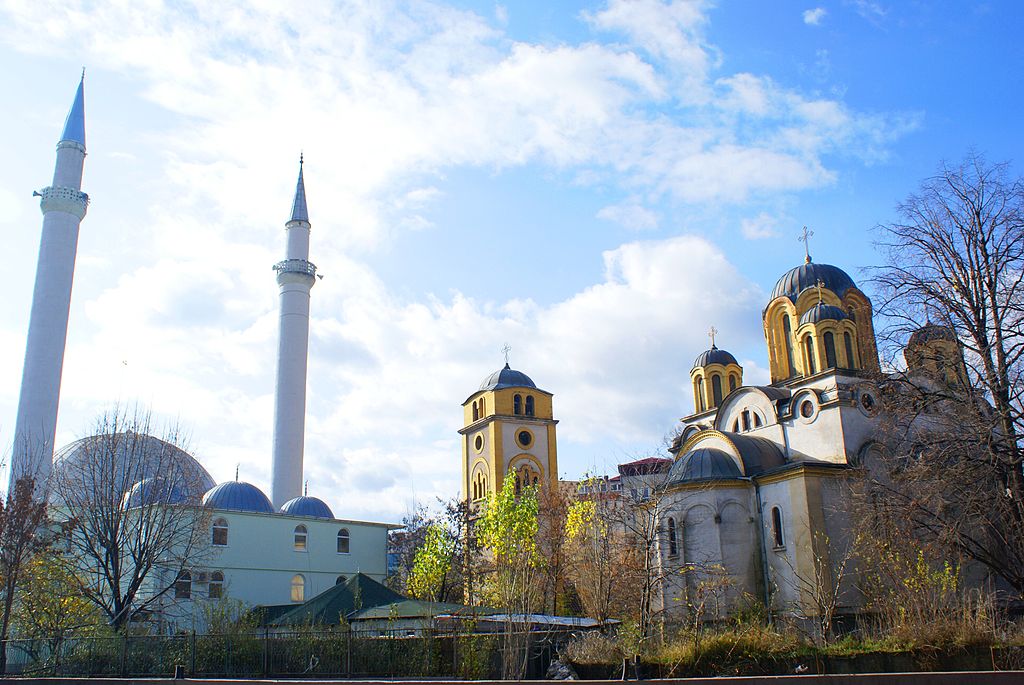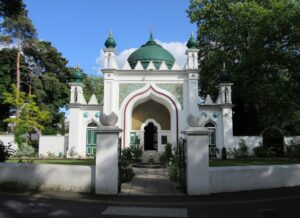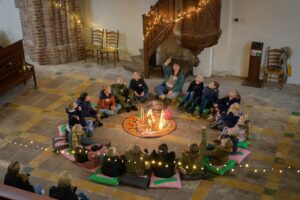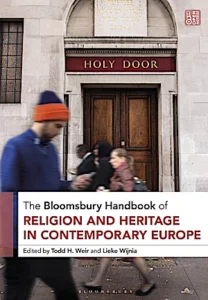The following article is an excerpt from the Bloomsbury Handbook of Religion and Heritage in Contemporary Europe, edited by Todd Weir and Lieke Wijnia. The full book is available online at: https://www.bloomsburycollections.com/monograph?docid=b-9781350251410

Representation is a key concern facing heritage work in Europe today. Whose past is represented in public, who gets to decide this, and for whom is it displayed? These questions become more pressing as European societies become more diverse. Whether a minority community can see itself represented in public heritage has a bearing on its sense of national and local belonging. As contributions to this handbook illustrate, politicians are aware of this and use the discourse of religious heritage to either include or exclude minorities from the national community (Baumgartner). Populists, such as Hungarian President Victor Orbán, frequently claim “Christian heritage” as a foundation of their nationalist projects (von Klimo). More subtle forms of exclusion have been baked into the heritage landscape of cities across Europe, for example, in naming streets after many male, but just one female theologian.
One of the tenets of the Council of Europe Framework Convention on the Value of Cultural Heritage for Society of 2005, known as the Faro Convention, is that heritage should help foster European social cohesion through more inclusive, democratic policies. Museum curators, heritage organizations, and activists are seeking ways to enact this norm by recalling marginalized and sometimes painful histories and giving them the breath of public life through acknowledgement as heritage. Pressure to draw past and present representatives of minority communities into the heritage-making process is expressed through both top-down and bottom-up initiatives. An example of the former is the project Jewish Country Houses, a collaboration between Oxford University and the National Trust. The affluent manor houses made available to the public through the National Trust are jewels in the crown of British national heritage. Highlighting the Jewish identity of some of their previous owners diversifies national heritage, broadening what is perceived as British and fracturing the implicit identification of manor houses with a Christian, white gentry, an idea familiar to viewers worldwide through films and television series like Pride and Prejudice and Downton Abbey (Green).
Jewish and Muslim activists have also developed bottom-up, grassroots heritage efforts. A walking tour of Lincoln Cathedral encourages viewers to consider both negative and positive depictions of Jews in the cathedral sculptures, thereby integrating Jewish history in the larger history of medieval England prior to the expulsion of the Jews in 1290 (Roberts). This route in Lincoln connects to efforts to insert Jewish heritage into a network of pilgrimage-tourist routes across Europe, helping to recover the historical and contemporary presence of Jews (Martinez-Ariño and Sorenssen). In order to debunk the “myth of Muslims as eternal outsiders” (Ansari; see also Puzon, Macdonald, and Shatanawi 2021), activists designed a series of Muslim Heritage Trails in South England, allowing visitors to discover Islamic built heritage in and around the town of Woking. By inscribing these sites in the national heritage map, the project gives British Muslims a purchase on the symbolic past of the country and disrupts the notion of national heritage as solely white and Christian (Hussain).

Shah Jahan Mosque, the first purpose-built mosque in the United Kingdom. Author: Hassocks5489
Religious buildings are sites of intense negotiations between faith communities. As postconflict Bosnia illustrates, these communities have sometimes come together to rebuild damaged religious buildings, but at other times have been divided again by new constructions sponsored by transnational religious actors (Hadžimuhamedović). The shared use of religious buildings by different faiths has often proven problematic. Some Dutch Christian congregations have objected to the reuse of underutilized churches by, for instance, Pentecostal or Muslim congregations (Kroesen 2010: 190–1). Conflicts have also flared over buildings with interreligious histories. The Hagia Sofia in Istanbul had been inscribed with universal cultural heritage value as the site of shared Christian and Muslim histories, but was recently also redesignated a mosque by Turkish authorities. And notwithstanding the Spanish celebration of the interreligious heritage of the convivencia of Jews, Muslims, and Christians in medieval Spain, the Catholic Church has resisted efforts by some Muslim activists to allow dual use of the former mosque turned cathedral in Cordoba (Griera). Despite such conflicts over shared religious use of historic buildings, there are important counterexamples, such as the German tradition of the Simultankirche jointly serving Catholic and Protestant congregations (De Wildt).
Stimulating cooperation between groups of different religious backgrounds is crucial for the future maintenance of religious heritage. Without the help of non-Jewish volunteers, many of the historic synagogues across Europe could not remain open to the public (Schrijver). An analogous situation is faced by underutilized or unused churches in immigrant neighborhoods in European cities. As Christian congregations dwindle and residents with past ties to the churches move away, the question of who will care for the churches raises a major challenge. A pioneering example to address this challenge is the collaboration between the Churches Conservation Trust and a local Muslim activist in the English town of Bolton. Together they have transformed the All-Souls church into a vibrant community center (Aiers and Omarji).

The School Church is an educational and exhibition space in the former church of Garmerwolde (The Netherlands). Author: The School Church
Religious heritage sites are increasingly used for interreligious educational projects. In 2020, the Groningen Historic Churches Foundation inaugurated its School Church in the town of Garmerwolde. It features an exhibit in the church tower that uses Muslim and Christian holidays as a way to entice school age children to engage with these two religious cultures and to open up to each other about how they celebrate feasts within their families. The focus on holidays highlights the cultural side of immaterial religious heritage (Basteleur), but the exhibition creators did not shy away from a conceptual design that evokes reflection on spiritual matters either. Because Islamic and Christian religious content flows together and is mediated by contemporary design, this exhibition offers an example of how some heritage makers are moving in a postsecular direction. In this case, the designers used aesthetic means to evoke in children an imaginative, yet potentially spiritual response to religious traditions. Such a playful engagement with spiritual content may, however, raise the eyebrows of some parents who are religious adherents, or, by contrast, ardently secular (Ter Borg, Nijdam, and Vroom 2020).
The overwhelming governmental and institutional support of inclusive heritage leads to further questions: How should the requirements for inclusion be balanced with the need felt by many Europeans to honor dominant religious traditions? Might inclusive heritage ironically reproduce some of the restrictive qualities of the authorized heritage discourse it set out to democratize, such as normative control of process, content, and purpose? Is there a way to bring together minority and majority conceptions of heritage without alienating either? Or should practitioners adhere to the ideal formulated by anthropologist Talal Asad of a “Europe in which everyone lives as a minority among minorities” (2002: 226)? Such questions require consideration, if heritage practitioners are to successfully navigate the polarization between the camps of today’s culture wars. One project that foregrounded inclusion and diversity, while still implicitly honoring the dominant tradition was Hemelsbreed (Under the vast heavens), which documented the heritage of five minority communities in Flanders. It was a joint production of Kadoc, which began life as the Catholic Documentation and Research Center in 1977, and Parcum, initiated by Flemish bishops in 1997. Thus, heritage organizations whose own histories are intimately linked to the dominant public religion of the region have sought to help religious minorities locate themselves in the past and thereby gain purchase in the landscape of national heritage (Lamberts 2002).
Cultural historian Willem Frijhoff has likened heritage to a buoy that anchors the present to events and places in the historical past. Yet, as heritage is jostled by the waves of memory, culture and politics, it drifts from this anchor. In other words, at the same time that heritage is historically rooted, it is also constructed and subject to competition and negotiation (Frijhoff 2003). Critical research can uncover the dynamics of authority exercised by religious and heritage institutions and also shed light on neglected or suppressed histories. These, in turn, can help minority communities create public space for their heritage or enter into the imagined national heritage. But these developments are not being solely or even largely driven by the 8scholarly quest for more accurate understandings of historical reality. This would be to confuse the buoy with the anchor. The chief reason why the diversification of heritage has become a “best practice” for heritage organizations is because a diverse society requires a diverse heritage.
By Lieke Wijnia and Todd H. Weir, editors of the Bloomsbury Handbook of Religion and Heritage in Contemporary Europe.
About the book
 The Bloomsbury Handbook of Religion and Heritage in Contemporary Europe provides state-of-the-art scholarship on religious heritage in contemporary Europe, aimed at scholars, practitioners and policy makers. It contains articles by both scholars and heritage practitioners, and explores the key challenges facing organizations, churches, and governments, as well as academics studying religion and heritage.
The Bloomsbury Handbook of Religion and Heritage in Contemporary Europe provides state-of-the-art scholarship on religious heritage in contemporary Europe, aimed at scholars, practitioners and policy makers. It contains articles by both scholars and heritage practitioners, and explores the key challenges facing organizations, churches, and governments, as well as academics studying religion and heritage.
Divided into three parts, the book brings together critical analysis and an exploration of best practices, structured along major themes, including tourism, the (post)secular, economics, multiple usages, Jewish heritage, Muslim heritage, museums, contemporary art, and architecture.
The book explores how historic places of worship, including churches, synagogues, and mosques in Europe, are among the most heavily visited heritage sites worldwide, yet declining church attendance means that many, historic churches are being repurposed. It also examines the key role religious heritage plays in political discourse, both in the interest of including and excluding religious minorities.
The book is available online at https://www.bloomsburycollections.com/monograph?docid=b-9781350251410





Follow us: